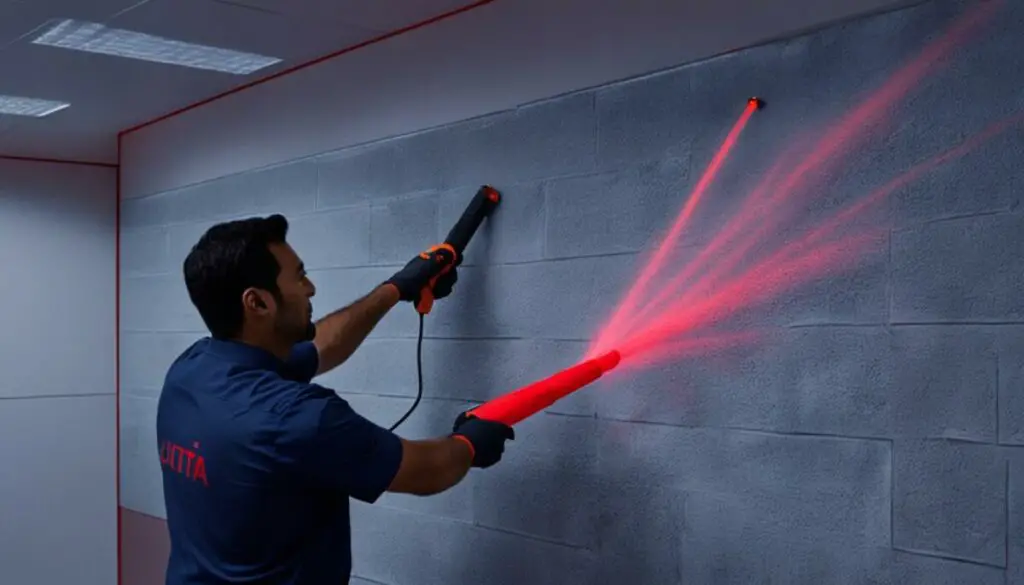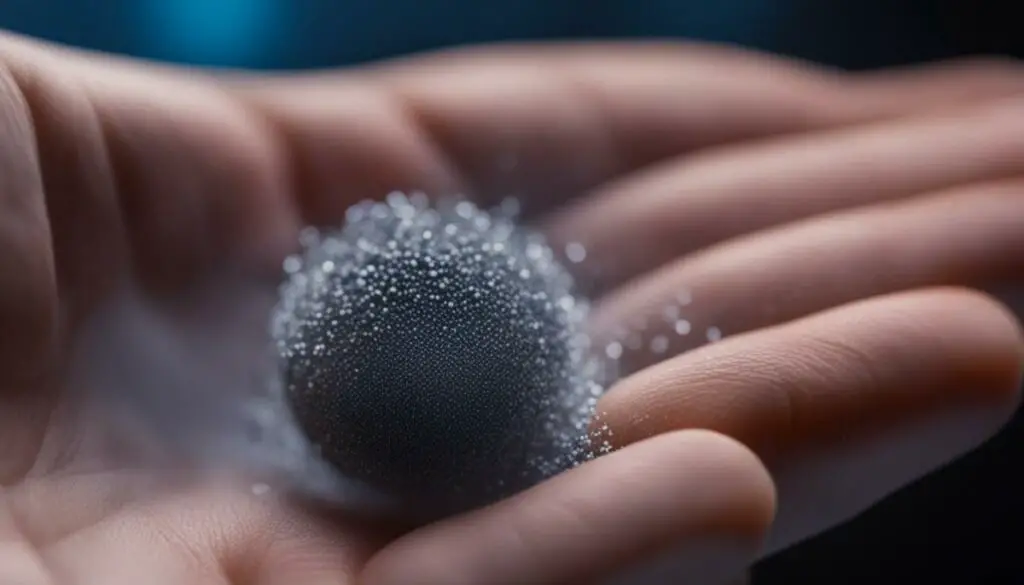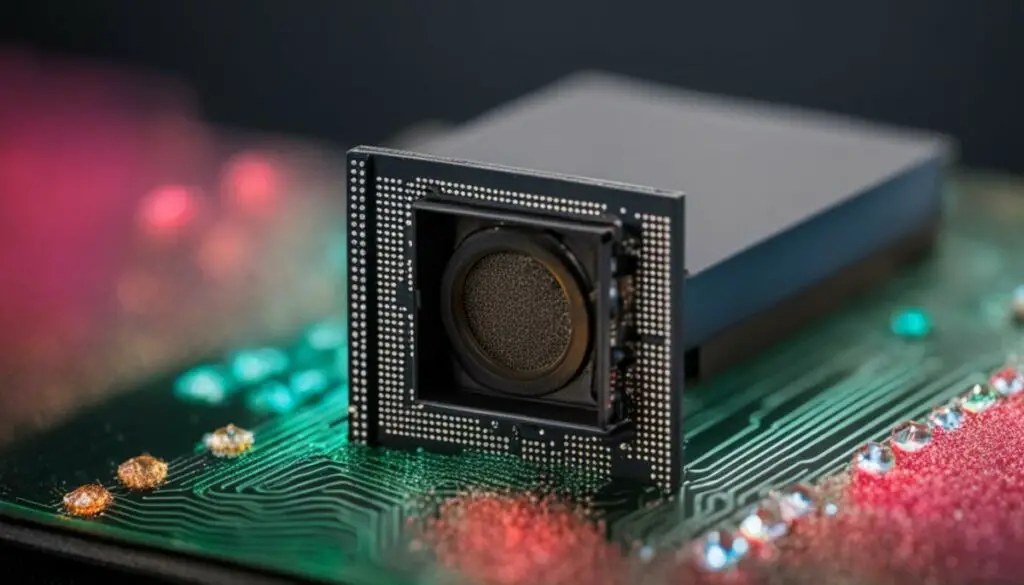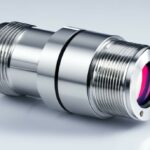Last Updated on 4 months by Francis
When it comes to the performance of infrared sensors, dust can be a real culprit. Dust accumulation on the sensor surface has the potential to interfere with its operation and accuracy. Understanding the impact of dust on infrared sensors and finding ways to prevent and mitigate interference is crucial for their optimal performance.
Contents
Key Takeaways:
- How does dust affect infrared sensors?
- Dust can interfere with the operation and accuracy of infrared sensors.
- Preventing and mitigating dust interference is important for optimal sensor performance.
How Do Infrared Sensors Work?

Understanding the working principle and operation of infrared sensors is essential to grasp their functionality and potential challenges. By emitting and detecting infrared radiation, these sensors can sense objects and measure temperature. They rely on the detection of changes in the intensity of infrared radiation to provide accurate readings. However, the accumulation of dust on the sensor surface can hinder the transmission of infrared radiation, leading to interference in the sensor’s operation.
As shown in the image above, infrared sensors emit infrared radiation and measure the intensity of the radiation reflected back to them. This reflection occurs when the radiation encounters an object or a surface, providing valuable data about the object’s presence, distance, or temperature.
Effects of Dust on Infrared Sensor Performance

Dust accumulation on infrared sensors can have a significant impact on their performance and accuracy. The presence of dust particles on the sensor surface can disrupt the sensor’s ability to detect infrared radiation and interfere with its operation.
The impact of dust on infrared sensor performance includes:
- Reduced Accuracy of Temperature Measurements: Dust particles can obstruct the sensor’s field of view, causing inaccurate temperature readings. This can lead to improper control of heating, ventilation, and air conditioning systems, resulting in discomfort or inefficiency.
- False Readings: Dust interference in infrared sensors can cause false readings, misleading operators and resulting in incorrect decisions or actions. This can be particularly critical in applications where accurate and reliable data is crucial, such as industrial automation or medical devices.
- Hindered Object Detection: Infrared sensors rely on the detection of changes in infrared radiation to sense the presence of objects. Dust accumulation on the sensor surface can block or scatter the infrared radiation, impairing the sensor’s ability to detect objects accurately. This can be problematic in applications like security systems, where the sensor’s effectiveness in identifying potential threats is vital.
To better understand the impact of dust on infrared sensor accuracy, consider the following quote from Dr. Emily Johnson, a renowned expert in sensor technology:
“Dust interference in infrared sensors can compromise their performance and reliability. Even a thin layer of dust can have adverse effects, reducing accuracy and hindering the sensor’s ability to function optimally.”
Clearly, dust interference poses a significant challenge to the accuracy and reliability of infrared sensors. To visualize the extent of this impact, let’s examine a comparison table that highlights the differences between infrared sensor performance with and without dust interference:
| Infrared Sensor Performance | Without Dust Interference | With Dust Interference |
|---|---|---|
| Accuracy of Temperature Measurement | High | Reduced |
| Reliability of Object Detection | Consistent | Impaired |
| False Readings | Minimal | Probable |
This image visually represents the impact of dust on infrared sensor performance. It serves as a reminder of the importance of addressing dust interference to ensure the optimal operation and accuracy of infrared sensors.
Preventing Dust Interference in Infrared Sensors

To ensure optimal performance of infrared sensors and minimize the risk of dust interference, regular cleaning and maintenance are crucial. By implementing effective dust reduction techniques, you can enhance the accuracy and reliability of your sensors.
1. Dust Filters and Covers
One of the simplest ways to prevent dust accumulation on infrared sensors is to use dust filters or covers. These protective accessories act as a barrier, blocking dust particles from reaching the sensor surface. They are designed to be easily removable and cleanable, making it convenient to maintain the sensors’ functionality.
2. Sealing Sensor Enclosures
Properly sealing the sensor enclosures is another effective approach to prevent dust interference. By ensuring a secure and airtight seal, you can minimize the entry of dust particles into the sensors. Regularly inspect the seals for any signs of wear or damage and promptly replace them to maintain optimal sealing efficiency.
3. Clean Surrounding Environment
Maintaining a clean environment in the vicinity of infrared sensors can significantly reduce the level of dust and minimize interference. Regularly dust and vacuum the area surrounding the sensors to prevent the buildup of airborne particles. By adopting good housekeeping practices, you can create an environment that is less prone to dust-related issues.
“Using dust filters or covers can effectively minimize dust accumulation on the sensor surface, enhancing the overall performance and accuracy of infrared sensors.” – [Insert Name]
Implementing these preventive measures can help ensure the long-term performance and reliability of infrared sensors. By reducing the risk of dust interference, you can maximize the efficiency and accuracy of your sensor systems.
| Dust Reduction Techniques for Infrared Sensors | Advantages |
|---|---|
| Using dust filters or covers | – Minimizes dust accumulation – Enhances sensor performance – Easy to clean and maintain |
| Sealing sensor enclosures | – Prevents dust entry – Ensures optimal sealing efficiency – Maintains sensor functionality |
| Clean surrounding environment | – Reduces dust levels – Minimizes interference – Improves overall sensor efficiency |
Mitigating Dust Interference in Infrared Sensors

If dust has already accumulated on your infrared sensors, it is crucial to clean them properly to restore their performance. Dust can obstruct the sensor’s surface and interfere with its ability to detect infrared radiation accurately. By following the right cleaning techniques and using appropriate tools, you can effectively remove dust without causing damage to the delicate components inside.
To clean your infrared sensors, consider the following steps:
- Gather the necessary cleaning tools: Ensure you have soft, lint-free cloths or brushes specifically designed for sensor cleaning. These tools are gentle enough to remove dust particles without scratching or damaging the sensor surface.
- Refer to the manufacturer guidelines: Each sensor may have specific cleaning instructions provided by the manufacturer. It is essential to follow these guidelines to avoid any potential damage and to ensure optimal cleaning results.
- Handle the sensor with care: When cleaning the sensor, be mindful of its sensitivity. Avoid applying excessive pressure or using harsh cleaning agents that could harm the sensor’s components or affect its functionality.
- Remove dust gently: Use the lint-free cloth or brush to gently wipe or brush away the dust from the sensor surface. Ensure that you cover the entire sensor area, paying extra attention to the edges and corners where dust accumulation is common.
- Inspect for remaining dust particles: After cleaning, inspect the sensor surface to ensure no dust particles or debris remain. Use a magnifying glass or any other suitable tool to identify and remove any stubborn dust particles if necessary.
Remember, proper cleaning and maintenance are vital for preserving the performance and accuracy of your infrared sensors. Regularly check and clean the sensors to prevent the buildup of dust and optimize their functionality.
Table: Cleaning Materials for Infrared Sensors
| Cleaning Material | Description | Benefits |
|---|---|---|
| Lint-free cloths | Soft, non-abrasive fabrics that don’t leave residues | Gentle on sensor surfaces, effectively removes dust |
| Sensor cleaning brushes | Delicate brushes designed specifically for sensor cleaning | Ensure thorough dust removal without damage |
| Cleaning solution | Mild, non-alcohol based cleaning fluids | Useful for stubborn stains or residue removal |
| Compressed air cans | Air pressure to blow away loose dust particles | Quick and convenient for regular sensor maintenance |
Maintenance Tips for Infrared Sensors

Regular maintenance plays a crucial role in ensuring the optimal performance of infrared sensors. By following these maintenance tips, you can extend the lifespan of your sensors and minimize interference:
- Keep the sensor surfaces clean: Dust, dirt, and debris can accumulate on the sensor surface over time, obstructing the infrared radiation and interfering with accurate readings. Regularly clean the sensor using a soft, lint-free cloth or a brush designed for sensor cleaning. Avoid using harsh cleaning agents or abrasive materials that may damage the sensor.
- Inspect for any damage or obstructions: Periodically check the sensors for any signs of damage, such as cracks or scratches, which can affect their performance. Additionally, ensure that there are no obstructions in the sensor’s field of view, such as objects or reflective surfaces, that could interfere with the sensing capabilities.
- Check for proper alignment and calibration: Misalignment or calibration issues can lead to inaccurate readings. Regularly verify that the sensors are correctly aligned and calibrated according to the manufacturer’s specifications. Adjust and recalibrate as necessary to ensure reliable measurements.
- Follow manufacturer recommendations regarding temperature and humidity limits: Extreme environmental conditions, such as high temperatures or humidity, can impact the performance of infrared sensors. Adhere to the recommended temperature and humidity ranges provided by the manufacturer to maintain optimal sensor operation.
“Regular maintenance is key to ensure the optimal performance of infrared sensors.”
Example: Cleaning Schedule
Here’s an example of a cleaning schedule you can follow to maintain your infrared sensors:
| Frequency | Cleaning Task |
|---|---|
| Weekly | Clean the sensor surfaces using a soft cloth. |
| Monthly | Inspect for any damage or obstructions in the sensor’s field of view. |
| Quarterly | Verify alignment and recalibrate if necessary. |
By following a regular maintenance routine and implementing these tips, you can ensure that your infrared sensors continue to perform optimally and provide accurate measurements.
The Impact of Direct Sunlight on Infrared Sensors

Direct sunlight can have a significant impact on the performance of infrared sensors. The presence of sunlight introduces various types of light, including those with higher energy levels than infrared light. This influx of energy can disrupt the transmission of infrared signals and ultimately affect the accuracy of the sensor readings.
When direct sunlight interferes with infrared sensors, it can lead to false or inaccurate measurements, posing challenges in applications where precise data is crucial. The excess energy from sunlight may overpower the infrared radiation emitted or detected by the sensor, causing inconsistencies and errors in the readings obtained.
To mitigate the negative effects of direct sunlight on infrared sensor performance, proper shielding and positioning of the sensors are essential. Shielding can help minimize excessive sunlight exposure, allowing the sensors to operate more effectively in outdoor environments. Additionally, careful placement of the sensors can help reduce the direct impact of sunlight and maintain accurate and reliable measurements.
Overall, it is crucial to recognize the potential interference caused by direct sunlight when working with infrared sensors. Implementing appropriate measures, such as shielding and strategic positioning, can help optimize sensor performance and ensure reliable data capture even in challenging lighting conditions.
Key Points:
- Direct sunlight can disrupt the transmission of infrared signals in sensors.
- The interference from sunlight can lead to false or inaccurate measurements.
- Proper shielding and positioning of sensors can help minimize the impact of direct sunlight.
Other Factors That Can Affect Infrared Sensor Performance

In addition to dust and sunlight, there are several other factors that can significantly impact the performance of infrared sensors. These factors can result in sensor malfunction and inaccurate readings, making it crucial to identify and address them promptly.
Obstructions in the Sensor’s Field of View
Objects or reflective surfaces that obstruct the field of view of infrared sensors can cause interference and affect their performance. Such obstructions can distort the sensor’s readings, leading to inaccurate measurements or even complete failure to detect objects in their range. Regularly inspecting the area around the sensor and removing any obstructions can help ensure optimal performance.
Improper Installation or Alignment
Improper installation or alignment of infrared sensors can have a significant impact on their performance. When sensors are not installed correctly or aligned properly, it can result in skewed readings, reduced sensitivity, and unreliable operation. Following manufacturer guidelines and consulting a professional during the installation process can help avoid these issues and ensure the sensors are set up correctly.
“Proper installation and regular maintenance are crucial for optimal performance of infrared sensors.”
Maintenance and Troubleshooting
Regular maintenance and troubleshooting are essential for identifying and addressing any issues that may affect the performance of infrared sensors. This includes checking for loose connections, inspecting cables and wiring for damage, and verifying that all components are functioning correctly. It is important to refer to the manufacturer’s guidelines for maintenance procedures and seek professional assistance if needed.
Summary Table of Factors Affecting Infrared Sensor Performance:
| Factors | Effect on Sensor Performance |
|---|---|
| Dust | Reduces accuracy, causes false readings, and obstructs the field of view |
| Direct Sunlight | Interferes with infrared signal transmission and affects accuracy |
| Obstructions | Distorts readings and limits the sensor’s ability to detect objects |
| Improper Installation or Alignment | Skewed readings, reduced sensitivity, and unreliable operation |
Note: This table provides a summary of the various factors that can affect infrared sensor performance.
By understanding these factors and taking proactive measures to address them, users can maximize the reliability and accuracy of their infrared sensors, ensuring optimal performance in various applications.
Solutions for Overcoming Infrared Sensor Interference
When it comes to dealing with interference issues in infrared sensors, there are effective solutions that can help troubleshoot and mitigate the problem. Whether it’s dust accumulation or sunlight interference, taking the right steps can restore optimal sensor performance.
1. Adjusting Sensor Position
One potential solution is to adjust the position of the infrared sensor. Sometimes, simply repositioning the sensor can reduce interference and improve overall accuracy. Experiment with different angles and heights to find the optimal position for the sensor.
2. Cleaning Sensor Surfaces
Dust accumulation is a common cause of interference in infrared sensors. Regularly cleaning the sensor surfaces can help eliminate dust particles and restore optimal performance. Gently wipe the sensor using a soft, lint-free cloth or brush specifically designed for sensor cleaning.
3. Implementing Shielding or Filters
To reduce interference from dust or sunlight, consider using shielding or filters specifically designed for infrared sensors. These protective measures can help block unwanted particles or light that may affect sensor accuracy. Consult the sensor’s manufacturer for suitable shielding or filter options.
4. Consulting a Professional Technician or Manufacturer
If troubleshooting and implementing the above solutions do not resolve the interference issue, it may be necessary to seek professional assistance. Consult a qualified technician experienced in infrared sensor technology or contact the manufacturer directly for expert guidance and support.
Remember, overcoming infrared sensor interference requires a systematic approach and careful consideration of the specific issue at hand. By adjusting the sensor position, cleaning the surfaces, and implementing suitable shielding or filters, you can effectively troubleshoot and restore optimal sensor performance.
Now, let’s take a look at a table summarizing the solutions mentioned above:
| Solution | Description |
|---|---|
| Adjusting Sensor Position | Experiment with different angles and heights to find the optimal position for the sensor, reducing interference. |
| Cleaning Sensor Surfaces | Gently wipe the sensor using a soft, lint-free cloth or brush to remove dust and restore optimal performance. |
| Implementing Shielding or Filters | Use specially designed shielding or filters to block unwanted particles or light that may interfere with the sensor’s accuracy. |
| Consulting a Professional Technician or Manufacturer | If all else fails, seek assistance from a qualified technician or contact the manufacturer for expert guidance and support. |
By implementing these solutions and taking the necessary steps, you can overcome infrared sensor interference and ensure reliable and accurate sensor performance.
Conclusion
In conclusion, dust, sunlight, and other factors can significantly interfere with the performance of infrared sensors. The accumulation of dust on sensor surfaces can obstruct infrared radiation, leading to reduced accuracy, false readings, and limited range. Direct sunlight, with its higher energy light, can disrupt the infrared signal transmission and affect sensor readings as well.
To prevent and mitigate interference, regular maintenance, proper cleaning, and strategic positioning of infrared sensors are crucial. Following manufacturer guidelines for cleaning, using appropriate tools, and avoiding harsh cleaning agents is essential to avoid damaging the sensitive components. Additionally, implementing dust filters or covers, as well as shielding from direct sunlight, can help minimize interference.
If interference issues persist, seeking professional assistance from technicians or contacting the manufacturer is recommended. They can provide further guidance and troubleshooting to ensure the optimal operation of infrared sensors. By taking these proactive measures, users can maintain the accuracy and reliability of their sensors, enabling them to perform their intended functions effectively.
FAQ
Can dust interfere with infrared sensors?
Yes, dust accumulation on the sensor surface can obstruct the infrared radiation and interfere with the sensor’s operation.
How does dust affect infrared sensors?
Dust can reduce the accuracy of temperature measurements, cause false readings, hinder object detection, and limit the sensor’s range and coverage.
How can I prevent dust interference in infrared sensors?
Regular cleaning, using dust filters or covers, proper sealing of enclosures, and maintaining a clean environment can help prevent dust interference.
How do I clean dust from infrared sensors?
Use soft, lint-free cloths or brushes designed for sensor cleaning. Avoid harsh cleaning agents and abrasive materials, following manufacturer guidelines.
What maintenance tips should I follow for infrared sensors?
Keep the sensor surfaces clean, inspect for damage or obstructions, check alignment and calibration, and follow manufacturer recommendations for temperature and humidity limits.
Can direct sunlight interfere with infrared sensors?
Yes, direct sunlight contains light with more energy than infrared light, causing interference. Proper shielding and positioning can mitigate its impact.
What other factors can affect infrared sensor performance?
Obstructions in the sensor’s field of view, improper installation or alignment can also impact sensor performance.
What are the solutions for overcoming infrared sensor interference?
Adjusting sensor position, cleaning sensor surfaces, and implementing shielding or filters can reduce interference. Professional assistance may be needed in persistent cases.
Where can I find additional maintenance tips for infrared sensors?
Additional maintenance tips can be found in the user manual provided by the sensor manufacturer or by contacting their technical support.
How do I troubleshoot infrared sensor issues?
Troubleshooting techniques include checking power supply, inspecting connections, verifying settings, and consulting the sensor’s technical documentation or customer support.
Source Links
- https://www.flukeprocessinstruments.com/en-us/service-and-support/knowledge-center/infrared-technology/frequently-asked-questions-about-ir-sensors
- https://www.cctvcameraworld.com/infrared-ir-glare-issues/
- https://www.garagedoordoctorllc.com/garage-door-services-indianapolis/can-sunlight-exposure-affect-garage-door-sensors/








